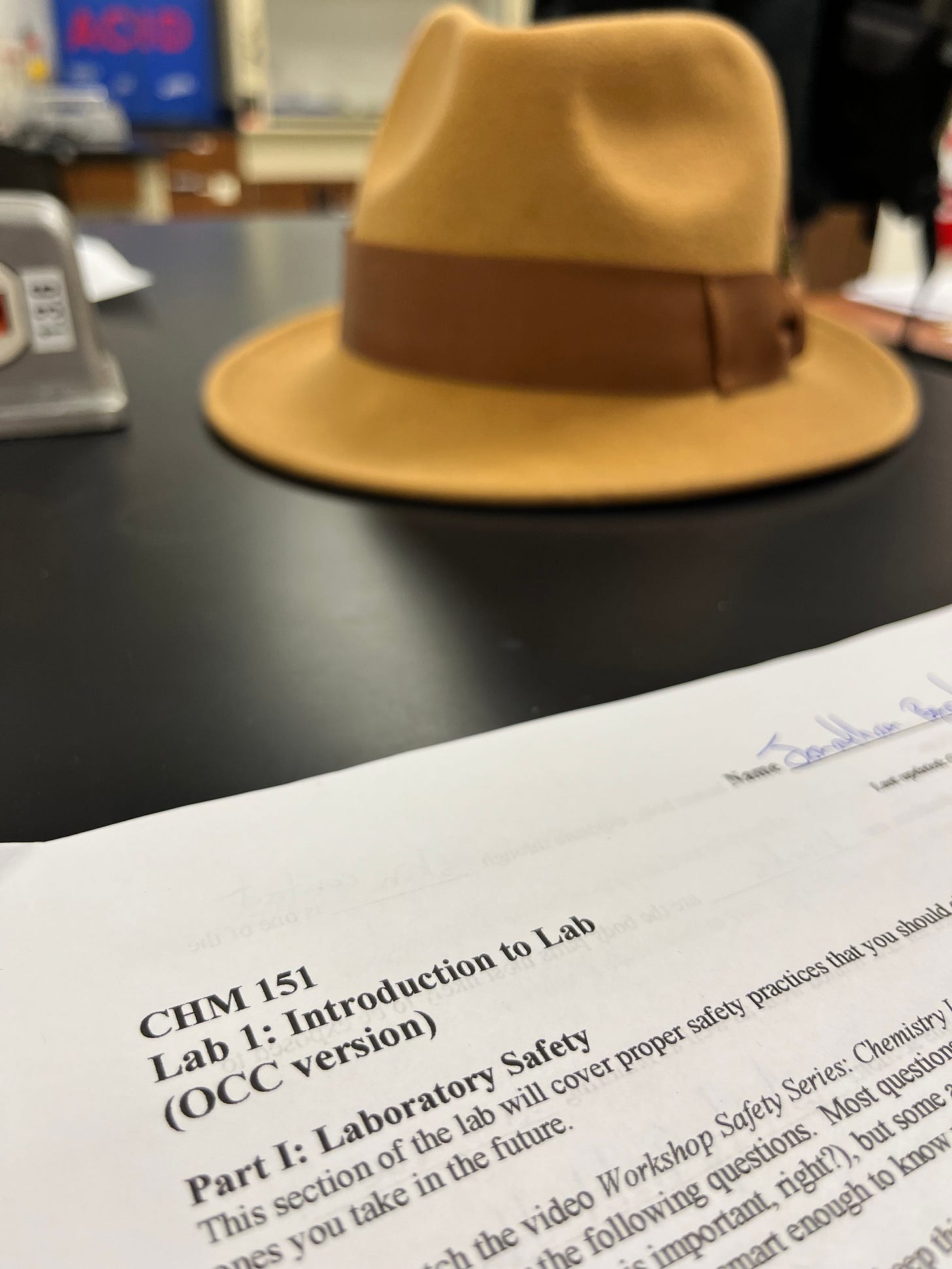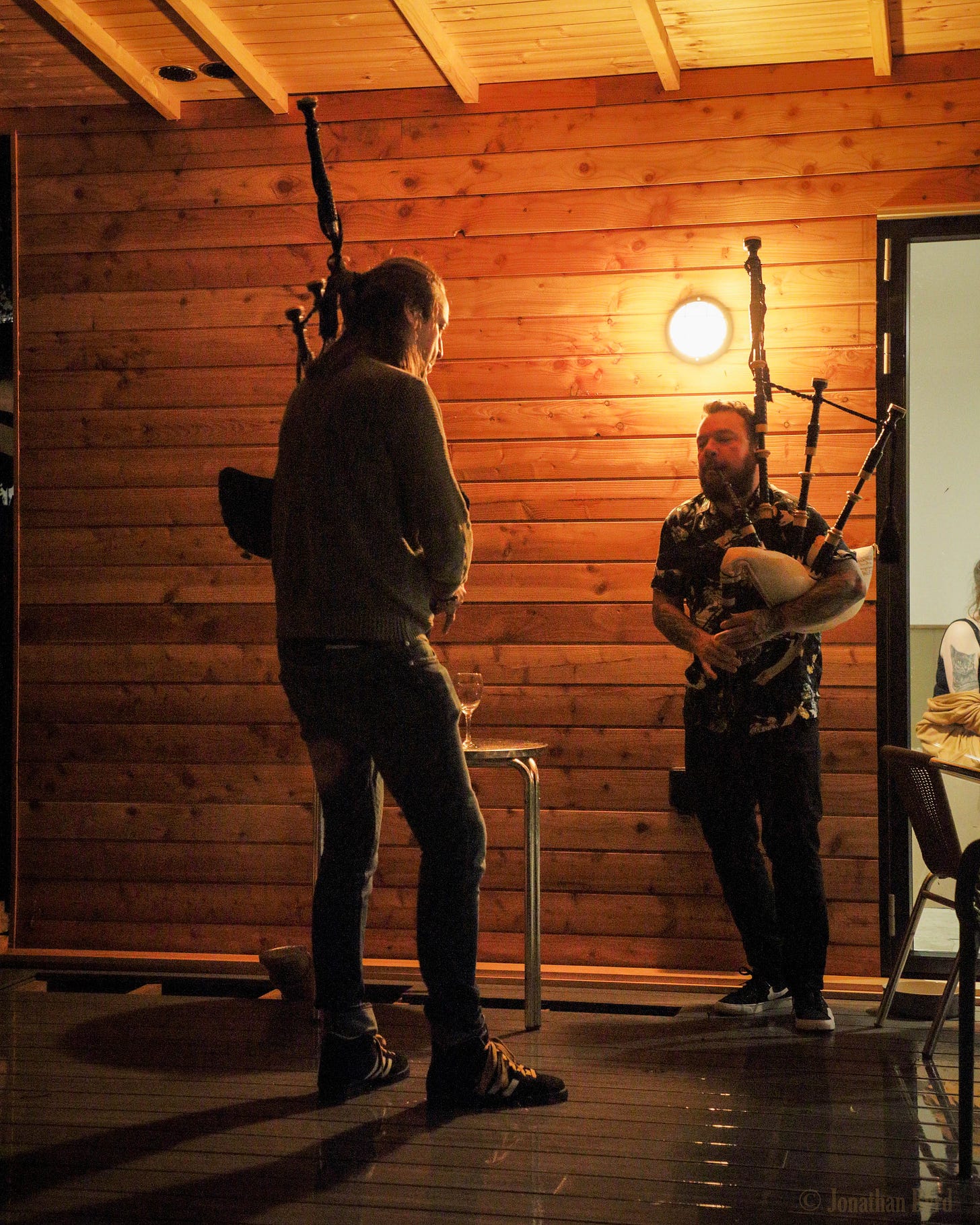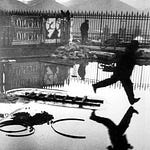I’m in my third week of college chemistry, and the most entertaining thing I’ve learned is the perfectly reasonable naming system for ions. I offer you here, free of charge, a direct transcription of the last lecture. Please take notes and try not to stab yourself with your pencil. There are many more creative ways to die doing chemistry; if you can be patient, we’ll get to those.
(Editor: actually not real.)
Professor Ima Pyro, PhD: We have a straightforward system of naming things in chemistry. For instance, these are named di- because “di” means “two,” except for this one which we call “thio” because it’s sulfur and Ancient Greek roots are sapio-erotic, but sometimes we do just call it sulfur, and you will memorize those instances when we do that. Otherwise, we name these combinations by the metal and then the non-metal, except for the enormous number that have no metals like ammonium, not to be confused with ammonia, and just remember those. Monatomic ions end with “ide,” and then if you add some oxygens — never mind how many — the polyatomic ion ends with “ite,” and if you add one more oxygen than that original amount — which is a secret amount known only to the priests — then it ends with “ate,” but don’t be fooled by hydroxide and cyanide which are polyatomic but also mischievous, so just memorize those two cheeky little ions.
Now, if we have more oxygens than one more than the original amount that only the priests know, then we’ve run out of suffixes and there’s nothing we can do. We must turn to prefixes like “per” and sometimes “super” because everyone loves super things, but if everything can be super, then nothing is, so we only do it rarely. If you have less than the church-mandated amount of oxygens, we may begin with “hypo” because sometimes you just needle little. That’s a pun, which is allowed in lecture but not in lab.
If the ion contains phosphorous, we begin the name with some form of that word, for example, “phosphate.” However, once in the Golden Time, a great prophet saw that one of these phosphorous ions was very flame-y, so we begin that one with “pyro,” which is also what we might call many people who get into chemistry because there are so many flame-y things. However, there is only one that we call “pyro.” Thus spake the prophet.
Okay, lab equipment: These are all screws except for this one that is 1.5 inches long. That’s called the Nail because Lavoisier called it a nail, so we cannot change it. We will learn to identify the difference between physical and chemical changes, but name changes require creativity, and creativity requires coffee, which is not allowed in the lab. Don’t forget to wear your safety glasses.
For your homework, study the straightforward system of naming ions you copied in your notes. Then, burn your notes and determine whether this is a physical change, a chemical change, or an existential crisis. Finally, memorize all the exceptions, which will be most of them.
Please fill out your post-lab questions with a No. 2 pencil, which is made of graphite, which is not a compound and does not have one more than the ordained number of oxygens because, in fact, it has no oxygens and is a mineral composed entirely of carbon. Have a great week.
Saturday, February 3rd, I will be playing a show at Cafe Veritas in Rochester, NY. Doors open at 7pm. Buy your tickets at https://www.showclix.com/event/jonathan-byrd
I’m leading two tours of Scotland that are selling out quickly. One is a photography tour, July 3-13, when we will be traveling to some of the incredible wild landscapes of Scotland to study light, composition, and processing to capture what we’ve seen and the emotions it inspired in us. Photographers of all levels are welcome and encouraged.
The second is a musical tour of Scotland, July 15-25, wherein we will listen to some of the greatest musicians Scotland has to offer. Last trip, we were surprised by an unexpected meeting with Fiona Ritchie! There is a schedule, but surprises abound.
Traceless Tours is a conservation tour company, which means we leave the landscape and the economy better than we found it. Some of your payment will go directly into wildlife conservation efforts. Some locations remain secret even to me until we are there, to keep human impact on the landscape minimal. I’m proud to work with Traceless Tours. You can put down your deposit and reserve your seat here:
Photography Tour, July 3-13, 2024
https://www.tracelesstours.com/photography-tour-with-jonathan
Music tour, July 15-25, 2024
https://www.tracelesstours.com/music-tour-jonathan















Share this post